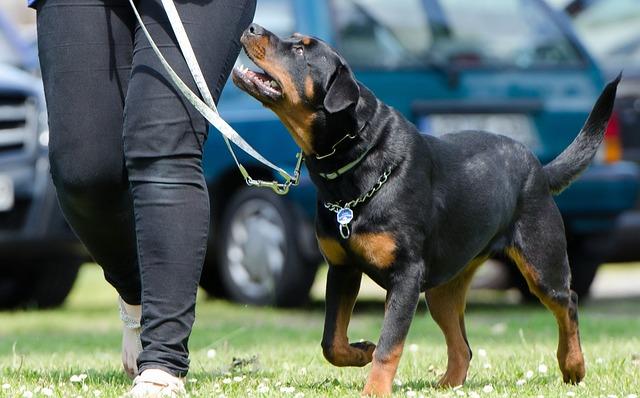Training your dog in public spaces can be a rewarding experience for both you and your furry companion. Not only does it provide essential socialization opportunities, but it also helps reinforce good behavior in a variety of environments. However, navigating the challenges of public training requires a thoughtful approach to ensure the safety and comfort of your pet, as well as those around you. In this guide, we’ll explore effective strategies and practical tips to help you confidently train your dog in public settings. With patience, consistency, and a little preparation, you and your dog can enjoy enriching outings that strengthen your bond and enhance your dog’s skills. Let’s embark on this journey to create positive, safe, and enjoyable training experiences for everyone involved.
Choosing the Right Public Spaces for Training
When venturing out to train your furry friend, selecting the appropriate public space is crucial for both safety and effectiveness. Look for areas that are dog-friendly and have ample room for your pet to move around without feeling confined. Parks with open fields, trails, or designated dog areas are ideal. Ensure the location has a low traffic flow of people and other animals, especially if your dog is still mastering basic commands. This reduces distractions and minimizes the risk of unexpected interactions.
- Check local regulations: Make sure the space allows dogs and adheres to any leash laws.
- Consider the environment: Choose places with safe surfaces to prevent injury, such as grass instead of concrete.
- Accessibility: Ensure the area is easily accessible and not too far from your home, in case of emergencies.
- Amenities: Look for spaces with nearby facilities like water fountains and waste disposal stations.
By thoughtfully choosing your training ground, you create a nurturing environment that fosters learning and strengthens the bond between you and your pet.
Essential Gear for Safe and Effective Training
When venturing into public spaces for dog training, having the right gear is crucial for ensuring both safety and effectiveness. A sturdy, well-fitted harness can provide better control and prevent strain on your dog’s neck compared to a traditional collar. Opt for a harness with reflective strips for visibility during early morning or late evening sessions. A reliable leash is another must-have; consider a length that allows freedom while maintaining control. Retractable leashes may not be ideal in crowded areas, so a standard six-foot leash is often recommended.
To ensure your training sessions are engaging, bring along a pouch filled with your dog’s favorite treats. This will help reinforce positive behavior and keep your dog motivated. Don’t forget a collapsible water bowl and a bottle of water to keep your furry friend hydrated. Lastly, waste bags are essential for cleaning up after your dog, helping you be a responsible pet owner and keeping public spaces clean. Equip yourself with these essentials to create a safe, respectful, and effective training environment.
Building Positive Experiences with Socialization Techniques
When introducing your furry friend to the hustle and bustle of public spaces, it’s essential to focus on creating positive experiences that reinforce good behavior. Start by selecting environments that aren’t overwhelmingly busy, like a quiet park or a less crowded street. These settings allow your dog to acclimate to new sounds and sights at a comfortable pace. Always bring along your dog’s favorite treats to reward calm behavior and friendly interactions. Remember, patience is key; allow your dog to observe and explore at their own pace without forcing interactions.
- Use familiar commands: Reinforce commands your dog knows well, such as “sit” or “stay,” to build their confidence in new environments.
- Watch body language: Pay close attention to signs of stress or anxiety, such as excessive panting or cowering, and be ready to remove your dog from overwhelming situations.
- Engage in play: Bring along a favorite toy to engage your dog in play, which can distract from stressors and make the experience more enjoyable.
Incorporating these techniques into your outings will help your dog develop a positive association with social environments, laying the foundation for a well-adjusted and sociable companion. With time and consistency, public spaces will become a playground of exploration and joy for both you and your dog.
Handling Distractions with Patience and Consistency
Training your dog in public spaces can be a rewarding experience, yet distractions are inevitable. The key to overcoming these interruptions is to approach them with patience and consistency. When your dog gets sidetracked, it’s important to gently guide them back to the task at hand without frustration. Use calm, reassuring tones and maintain a positive demeanor to help your furry friend feel secure and focused.
- Stay Calm: Dogs often mirror our emotions. If you’re calm, they are more likely to remain composed.
- Use Consistent Commands: Stick to the same commands and gestures. Consistency helps reinforce learning.
- Reward Focus: Praise and treat your dog when they successfully ignore distractions. This reinforces good behavior.
- Practice Regularly: Regular sessions help your dog get accustomed to ignoring distractions in different environments.
By incorporating these strategies, you’ll not only enhance your dog’s training experience but also strengthen the bond between you and your canine companion.

